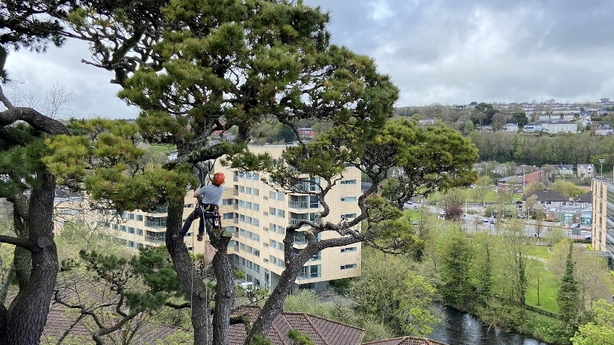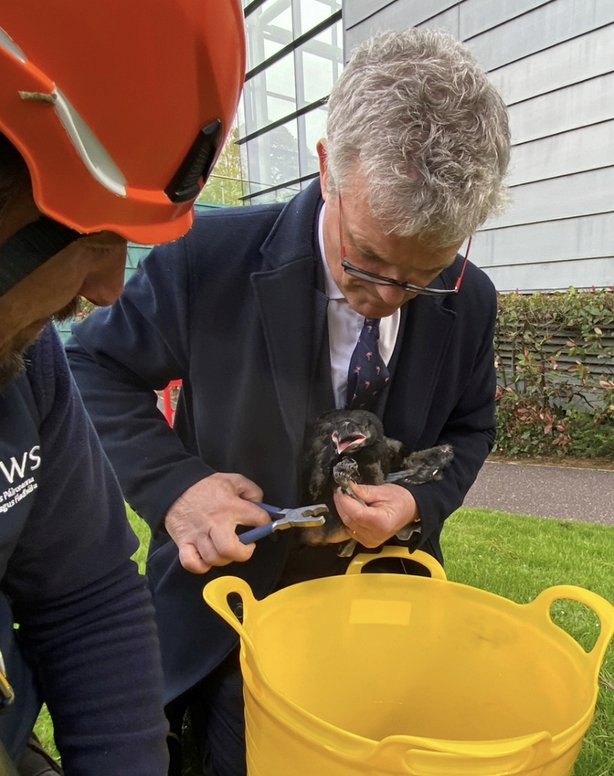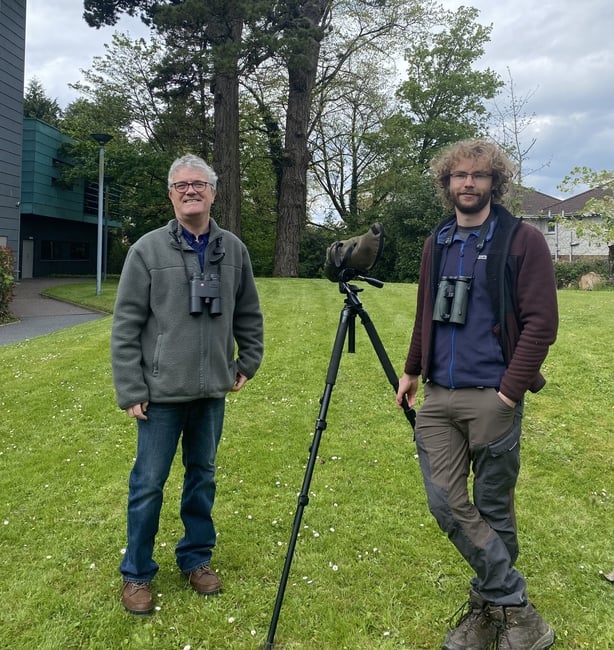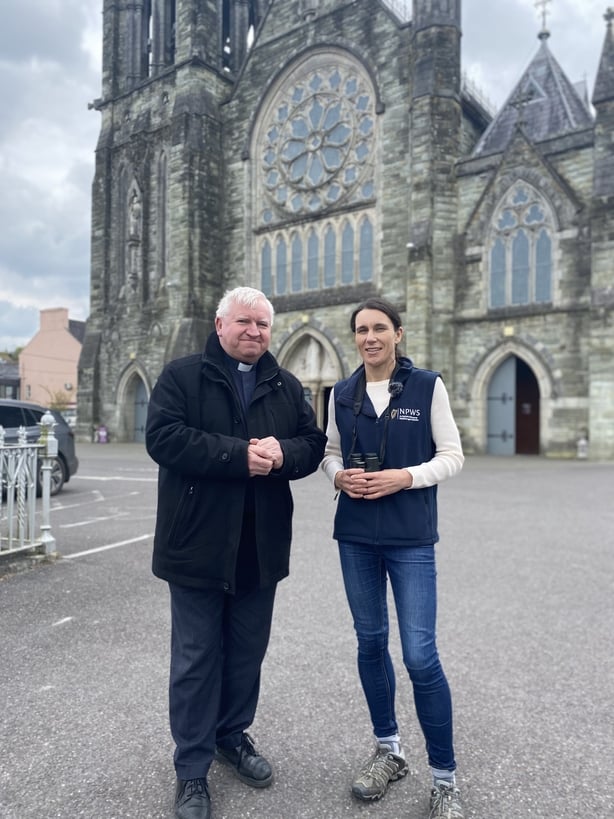A pair of ravens and their newborn chicks who live on the University College Cork campus are the latest recruits to a bird-ringing project aimed at gathering information on these commonplace but highly intelligent birds.
It is one of dozens of conservation projects being undertaken by the National Parks and Wildlife Service (NPWS) nationwide - including the monitoring of birds of prey on a church steeple in Clonakilty.
The active raven nest in a large Monterey pine tree on the Brookfield campus in UCC was first spotted by NPWS Ranger Sam Bayley, who oversees a national colour-ringing conservation project for raven chicks in Cork.
UCC President, Professor John O'Halloran, who is an ornithologist and licenced bird ringer, helped ring the chicks with Jess Hodnett of Fota Wildlife Park, after Dr Alan McCarthy of BirdWatch Ireland scaled the tree under licence from the NPWS and lowered the chicks in special bags to the ground.

"The call came that these ravens were here and I have ringed thousands and thousands of birds but I had never ringed a raven so the moment came," a delighted Professor O'Halloran said.
"This is a wonderful example of the importance of our arboretum to provide habitat for local wildlife."
UCC this week became the first higher education institute in the world to secure a fifth Green Flag.
The colour-ringing of raven chicks is a long term NPWS project. Its goal is that if the birds are sighted in the future this information can be used for monitoring purposes and to gain an understanding of their dispersal and longevity.

Although ravens are common in the Irish landscape, much still has to be learned about their survival, productivity and movements.
The largest member of the crow family, ravens are the world's largest songbird.
They are said to be highly intelligent, can mimic human voices and can remember faces.
Dr McCarthy of BirdWatch Ireland urged anyone who sees a raven with a colour ring to report the sighting.

And while ravens have taken up residence in UCC, the fastest member of the animal kingdom - the peregrine falcon - has taken to going to church in Clonakilty to 'prey'.
NPWS Conservation Warden Claire Deasy says the arrival of a pair of peregrine falcons to town has provided researchers with a unique opportunity to monitor the bird of preys' eating and breeding habits.
They have recently installed three cameras on the steeple of the town's Catholic church where the birds regularly feed.
The reaction locally "has been overwhelming", Ms Deasy said.
"There has been a huge positivity and interest in the project," she said.
"It is great to get a bird's eye view into the life and behaviours of what is normally a hidden situation with the birds and their nest territories as oftentimes they are nesting in very inaccessible areas like sea cliffs.
"We have noticed that even this year, in the early studies we have done, that they have preyed upon waders and water birds that come from far away in Iceland, as well as red shank and golden plover, so they are feeding on a real diverse range of birds, and that is down to the (coastal) location here."
The peregrine falcon is best known for its diving speed during flight which can reach more than 300 kilometres an hour.
But it was their loud wailing that first alerted startled townspeople to their new residents.

Parish Priest Fr Tom Hayes said it was a couple of days before he realised that the unusual noise everyone was hearing was coming from the church steeple.
"I didn't know at the time what the sound was," Fr Hayes said.
"All I knew was that it had to be some kind of animal or bird and then you noticed on the street people stopping and turning their necks trying to figure out what was actually going on.
"It was a couple of days before I realised that they were actually sitting on the balcony and I happened to have a camera. I was lucky. I got a couple of good shots of them.
"I was able to zoom in on them and identify what was going on. They are an amazing bird.
"It is a fantastic church building to have. It is almost 150 years old and to think mother nature has blessed it with these extraordinary species to live here in our environment, is a blessing as well."





